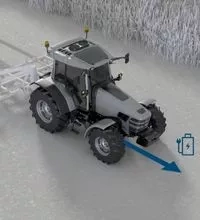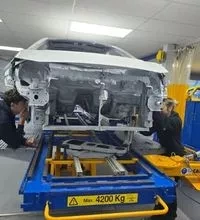Post-repair ADAS calibration: new code of practice
In this article: Thatcham's code of practice to keep safety and convenience features repaired and calibrated correctly. Note: this is not just about windscreen replacement...
Cars have become increasingly complex machines. Now more than ever, their operation depends on not just the driver themselves, but on a suite of sensors that relay information about the vehicle’s environment.
These sensors may inform the driver, operate systems to assist the driver or, as the systems’ capabilities increase, function with varying degrees of autonomy. There’s a wide range of these ADAS – from simple systems such as adaptive headlights or lane-keeping assistance, up to safety critical features like autonomous emergency braking. They may also include the latest Level 2 autonomous features that can assume full, monitored operation of vehicle controls.
These systems are inextricably tied to onboard sensors including cameras, ultrasonic emitters, radar, lidar and others. Generally you’ll find them at the extremities of the vehicle: in the front bumper, in the rear bumper, under door mirrors or mounted to the vehicle windscreen.
Given their position, it’s inevitable that these sensors will become part of many repairs. It doesn’t need to be a complicated accident repair to involve ADAS options. Even something that seems as simple as a windscreen replacement may involve a whole array of sensors, which are commonly located within the rear-view mirror. A wheel alignment may affect park assist features.
Whenever a sensor, or the vehicle parts it’s fitted to, is replaced there is a risk that the sensor may no longer be calibrated. That may lead to improper operation of the systems by the vehicle. This may be a minor irritation, such as the headlights no longer dipping when they ought, or the windscreen wipers failing to detect rain, through to inappropriate function – or lack of function – of safety-critical systems. Something that brings clear safety benefits may become a danger, and the repairer may be liable.
With this in mind, Thatcham has developed a simple code of practice for repairers, when it comes to dealing with ADAS functions and sensors to make sure they are repaired and calibrated correctly, and function as they should. A move welcomed by the IMI.
Here’s the lowdown...
Triage, Damage Assessment and Preparation
Before starting any repairs, the repairer should investigate the vehicle for ADAS sensors. This could involve using VIN/VRM lookup tools, diagnostics, or even questioning of the vehicle owner. If there are no ADAS options fitted, the vehicle can be repaired as normal, but whether the systems are present or not – or it’s not possible to determine - should be recorded for audit purposes.
Repair planning
The repairer should create a full repair specification. Where the vehicle has ADAS fitted, they should record what is fitted and what, if anything, will be affected by the repair process. This includes not only what sensors are directly affected, but those in close proximity to any repairs. The repairer should determine if any sensors will need calibration and of what type – static, dynamic, self-setting or any combination thereof. If the business does not have the capability to calibrate the sensors appropriately, the repairer will need to identify sub-contractors who can perform the calibration.
Calibration
All sensor calibration should then be carried out by technicians certified as currently competent. For audit purposes, the repairer should record the date of calibration, equipment used, certified evidence of the calibration results, their name and address, the name and address of any third party contracted to perform the calibration, technician proof of competence, vehicle make, model, mileage, VRM, and VIN.
Thatcham's code of practice should be considered whenever repairers are: repairing, removing and refitting, aligning or replacing parts in proximity to ADAS sensors, making any geometry changes or changes to vehicles’ suspension or ride height, and realigning, replacing or refitting any ADAS sensors or associated vehicle parts.
Vehicle manufacturers can support the repair industry, too. When bringing ADAS-equipped vehicles to market, manufacturers should provide advice on which scenarios would require calibration, support training to provide a proof of competence, provide calibration procedures, and supply vehicle data that can make it easy to identify the presence of ADAS sensors.




